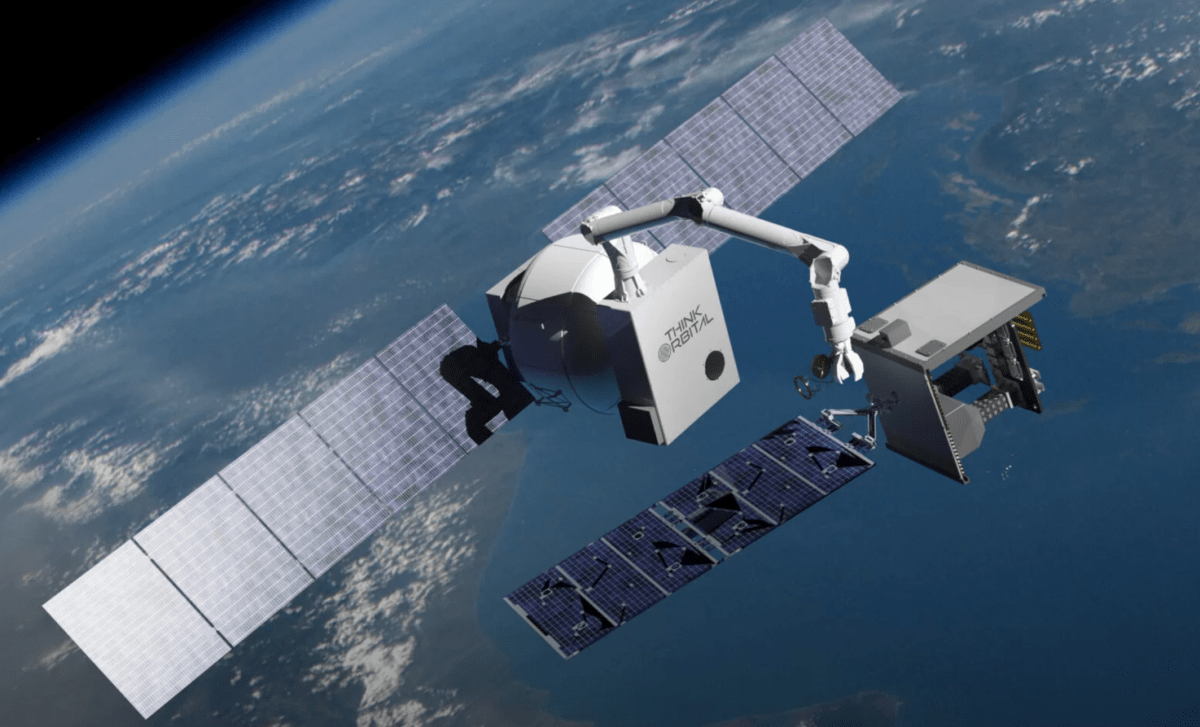WASHINGTON — ThinkOrbital later this year will attempt to demonstrate a robotic arm in space equipped with a welder gun that could be used to repair and take X-ray images of satellites.
The upcoming demonstration is part of the startup’s broader vision to provide an array of tools and facilities for repairing and maintaining spacecraft in orbit. And it is building on the momentum of its recent autonomous welding experiment that flew as a payload aboard a SpaceX Starlink mission on May 6.
This month’s experiment validated ThinkOrbital’s core welding technology by performing autonomous welding tests of aluminum samples during the suborbital flight, the company’s CEO and co-founder Lee Rosen told SpaceNews.
“We welded in outer space. We know that for sure,” he said. “We have images, so we know that part worked.”
The welding samples returned to Earth on the Falcon 9 booster, were recovered and are being analyzed by NASA and European Space Agency experts to assess the effects of microgravity. Rosen said this is the first step toward the construction of an orbital “toolkit” for building and repairing spacecraft.
ThinkOrbital’s welding demonstration payload
ThinkOrbital, based in Boulder, Colorado, is one of several companies selected last year by NASA for Space Act Agreements to advance commercial space capabilities.
For its self-funded demonstration in October, the company plans to test a robotic arm equipped with an electronic beam welder that can also generate X-rays to inspect objects in space. This X-ray capability has piqued the interest of the U.S. military as a possible way to identify potential threats in orbit.
“Potentially this would give us the ability to look inside satellites to see what’s in there,” Rosen said. “Given the recent Russian launch of what we suspect is a nuclear weapon on board a satellite as a counterspace weapon, the government is very interested in this.”
ThinkOrbital has secured a U.S. Air Force Phase 1 Small Business Innovative Research contract to investigate satellite-to-satellite X-ray inspection and is applying for Phase 2 funding. Rosen described the technique as “very similar to what the X-ray machine at the airport does, only on a different scale and different power.”
The company envisions providing robotic arms to satellite-servicing companies operating in low or high orbits “to fix things, patch holes, weld things together,” as Rosen put it.
Looking further ahead, it is pursuing an ambitious concept called ThinkPlatform — a spherical habitat designed to be flat-packed and robotically assembled in orbit using welding and additive manufacturing techniques. One of its applications could be to store and recycle orbital debris.
Rosen said the October demonstration of the robotic toolkit is being funded with the company’s pre-seed round. ThinkOrbital is kicking off a seed funding round next month.
“It’s important to demonstrate this capability for the government but we know that commercial ventures are also going to be customers for this technology,” said Rosen. The military might want to X-ray an adversary satellite, but commercial operators would probably want to image their own satellite if something is broken and needs examination.
New VP for government affairs
ThinkOrbital last week announced it hired retired Air Force Col. Justin Chandler as vice president of government relations and strategic partnerships.
In his most recent military assignment, Chandler was deputy chief for legislative affairs at the office of the secretary of the Air Force.
Both Rosen and Chandler have prior connections to SpaceX, where Rosen previously served as a vice president and Chandler was a military fellow embedded at the company.
Chandler told SpaceNews he sees significant opportunities for ThinkOrbital in the national security market. The X-ray capability, particularly, “is super intriguing from a defense perspective,”
The U.S. military considers space domain awareness to be vitally important for the defense of the nation’s space assets, Chandler said. “I really see the X-ray imaging technology as a game changer for the Space Force, and for all of our allies and partners.”
Another opportunity is in debris removal, he said. Cleaning up space junk will require an infrastructure to collect the debris and sort it out, he added. The ThinkOrbital circular structure — estimated to be four times as large as the International Space Station — would serve as a base of operations.
These huge platforms also would be marketed to the military for warehousing supplies in orbit.
“Space Force leaders are talking about the need for new innovative ideas for how to operate in the space domain, and shedding some of the baggage from the past, understanding that things have fundamentally changed,” said Chandler. “So I think the opportunity for commercial companies is great because the timing aligns well with the new ways of thinking from the leadership.”
Military space organizations don’t just want to work with companies that exclusively pursue government contracts, but prefer those that also have a commercial business, he said, “so the government doesn’t feel that they have to put up all the funding or the company doesn’t survive.”
